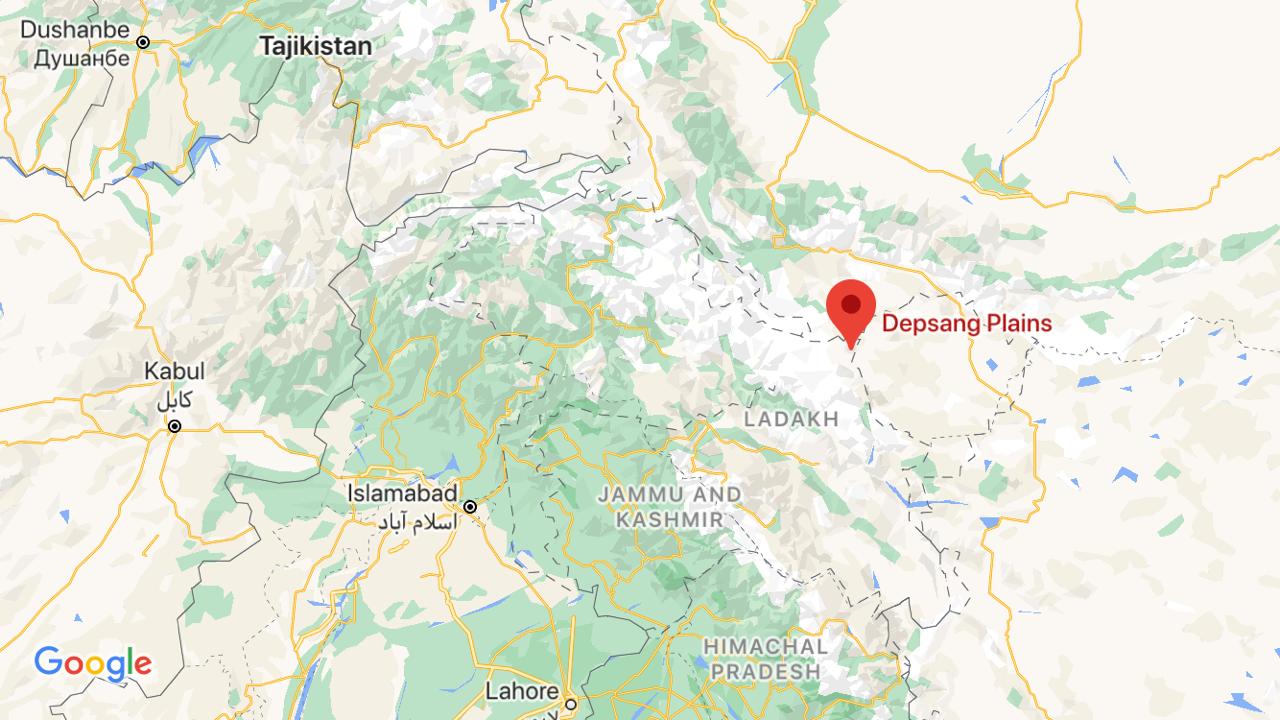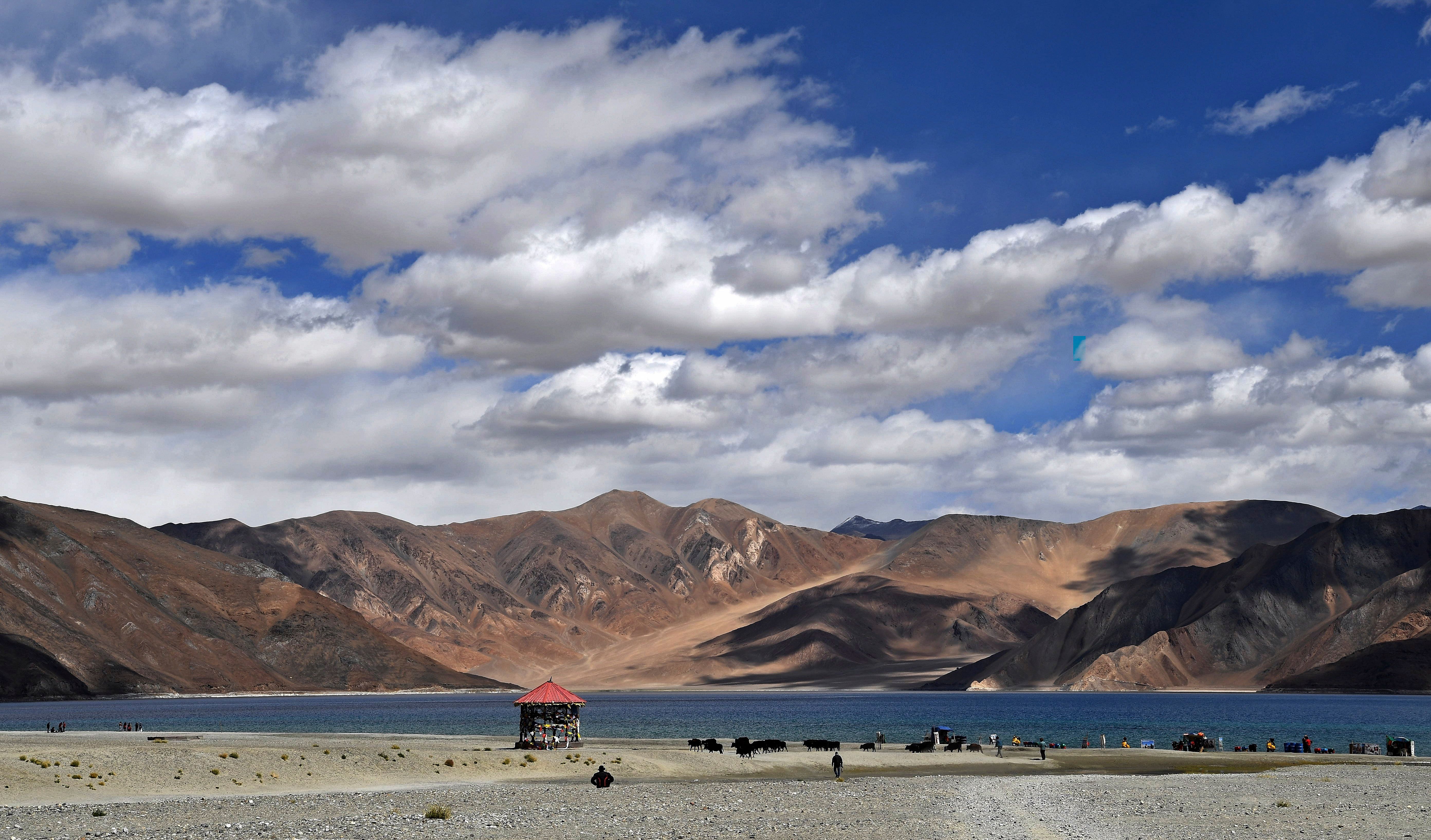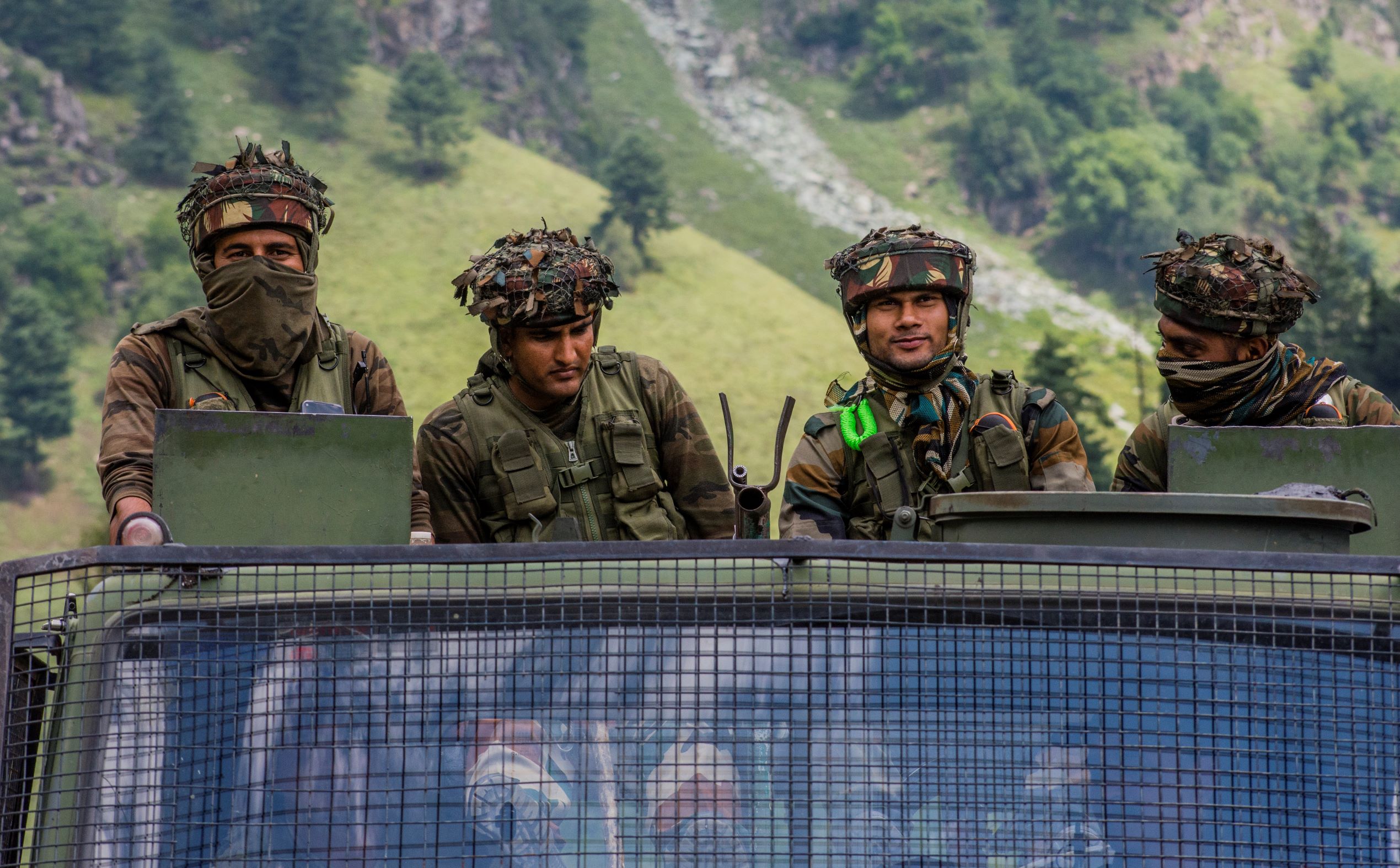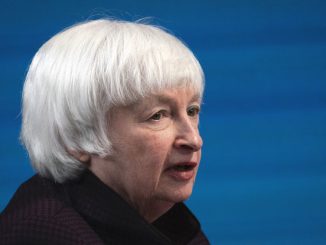
NEW DELHI—One year after the long-simmering India-China conflict heated up, the border is calm, but distrust between the two nations continues with stand-offs and tensions persisting in at least four locations in the eastern sector, according to Indian media
Tensions started in late April last year with troops on both sides engaging in skirmishes and aggressive patrolling and face-offs at multiple locations along the 2100-miles-long disputed border.
The situation escalated into a bloody conflict on June 15 at Galwan valley where Indians were building footbridges—an infrastructure development that the Chinese didn’t want.
While disengagement happened between the troops early this year after multiple rounds of high-level military talks at the Galwan valley and the southern and northern banks of Pangong Tso lake, tensions continue in Depsang Plains, Hot Springs, Gogra, and Demchok.
Pangong Tso lake is a trans-Himalayan brackish lake, two-thirds of which is under China’s control and the rest under India, while Depsang Plains, Hot Springs, Gogra, and Demchok are other strategic positions along Indian territory of Ladakh’s long border with China.
In an exclusive report that involved evidence from satellite imagery, India Today, a leading Indian media outlet reported on May 14 that the Chinese army continues to be present at contested locations in Ladakh. It attested its claims by showing minor adjustments by the Chinese near Gogra.
Gogra post is north of the Pangong Tso lake and dominates the point where the Chang Chenmo River approaches and a few patrolling points that the Indian Army used to patrol.
Lt. Gen Kamal Davar, India’s first Defence Intelligence Agency chief and a former commanding general officer for the Ladakh sector, said in a phone call that the Gogra post “links to a few passes like the Marsimik La—highest motorable pass in the world—and the ridgeline north of the lake. Thus its tactical importance.”
Some of the Chinese forward positions at Gogra saw a heavy military build-up in July last year. However, after military-level talks, it saw partial disengagement. In its satellite imagery report, India Today said that the Chinese continue to have posts and vehicles at the position.
The positions at the rear in Hot Springs, where the Chinese built permanent bunkers and a road last year, also show some minor adjustments.
The Chinese also continue to upgrade their infrastructure at Depsang Plains, a high-altitude gravely plains partly ruled by India and party by China as part of its Xinjiang Autonomous Region.
50 miles to the west of Depsang Plains is the disputed border called Line of Control between India and Pakistan, a region from where China is building the China-Pakistan Economic Corridor Project (CPEC) under the Belt and Road Initiative.

“These are ominous tidings revealing distinctly Chinese intentions. Clearly the Chinese are in for a long haul and display no intention of going back to their pre-April 2020 deployment,” Davar told The Epoch Times in an email. “This is typical of the Chinese salami-slicing tactics.”
Dr. Satoru Nagao, a non-resident fellow at the Washington DC-based Hudson Institute said the situation is still not clear but there are similarities between what’s happening right now and how the Chinese have behaved in the past on the same Indian border.
“This is one kind of pattern every year. In 2020 nearly 663 Chinese incursions in the Indian territory happened; recorded. So this means that within 365 days except for the winter season nearly two times per day, nearly three times per day,” Nagao told The Epoch Times over the phone adding that the Himalayan winters are long so these incursions have happened in a span of about 200 days and that’s why it could come up to three incursions every day.
“So view from this number Chinese incursion is one kind of routine situation for the border for the Indian side to defend the border,” said Tokyo based Nagao, an expert on U.S.-Japan-India security.
Nagao said India should be careful because the much-publicized Chinese withdrawal from the Pangong Tso lake early this year was a tactical or short time move and not a strategic or long-term move. The withdrawal was big because it involved 200 main battle tanks in two days at such a high altitude.
“This is not easy work. So withdrawal from Pangong Tso is a very big move but at the same time, it’s tactical and not strategic. China still has the intention to expand their territory in the India-China border to secure their resource-rich region,” said Nagao. By “resource-rich region” he meant the Tibet plateau that is rich in water and mineral resources and that shares a border with Ladakh.

2021 Geo-Political Context
Michael Johns, a Washington DC-based leading conservative policy expert and strategist, told The Epoch Times in an email that China’s military aggression with India reflects several alarming facts.
“First, the CCP sees Biden as weak and unwilling to muster the will and force necessary to counter their growing militarism in the region, including against India. Second, even if the PLA fails to hold the hundreds of square miles it seized in Ladakh, the cost to India of holding the PLA at bay will consume Indian defense resources and funds that otherwise would have gone to necessary military enhancements, upgrades, and maintenance,” said Johns who’s also the co-founder of the U.S. Tea Party movement.
He said this will weaken India’s defense capabilities irrespective of the outcome in Ladakh. China’s activities there can’t be seen a standalone Chinese agenda but should be seen in the context of larger Chinese activities globally.
“Third, coming along with China’s lies and deception on the Wuhan origins of the pandemic, their violation of the 1985 treaty with the UK on Hong Kong, genocidal treatment of the Uyghurs that is the greatest human rights crisis since the Holocaust, and then Tiger Yang’s provocative and disrespectful comments in Anchorage, it reflects a CCP conclusion that they do not care too much what the world thinks of their behavior,” said Johns.
S. Chandrashekhar, a visiting professor at India’s National Institute of Advanced Studies with research interests in national security issues told The Epoch Times in an email that China is a long-term threat to India’s existence as a nation.
“We need a clear well thought out integrated strategy to counter it. This is our great challenge on the international front,” he said.
“Given this larger picture, China will use the border issue as a continuing irritant and gradually erode the LAC [Line of Actual Control or the defacto border] to make inroads into Indian territory. [It will] use Pakistan as a surrogate to keep India in check. Try to get more and more economic leverage and gain direct and indirect control over India’s internal politics and markets. Counter and eventually dominate the Indian Ocean. This is the key,” said Chandrashekhar a former scientist with the Indian Space Research Organization.
He said India needs recognition of the Chinese threat and should define a clear strategy to deal with it.
“Continued economic growth, reducing dependence on China, being strong internally and a more equitable development model are major challenges. These are no doubt difficult but not beyond India’s capabilities if we have wise leaders,” he said.

Coinciding With Second COVID Wave
The Chinese’s reinforcement of their troops at these contested points as spring comes to the trans-Himalayan, high altitude border region coincided with the surge of the deadly second wave of the coronavirus pandemic in India.
Davar said the Chinese do feel that India can be pressurized at this time while it’s facing the deadly pandemic, and there are reasons behind it.
“One is to pressurize India, at this time, of India’s medical emergency. And number two, also to send a message across to the new administration in America: India and you can keep talking about the Indo Pacific and the international rules-based order, we follow our own rules,” said Davar.
“So I think they have a large design in mind as they are always trying their way through, as they’ve done on earlier occasions. And that is why India has to be very, very careful.”
Davar said the Chinese always play a double game and they have a stated strategy and an unstated strategy. He pointed out that on one hand Chinese leader Xi Jinping offered COVID aid to India and on the other hand the PLA continues to build up at the border.
Chandrashekhar said since China considers India as a threat, its approach is to choose a vulnerable time. “Push forward and occupy territory incrementally. The recent developments on the LAC fall into this category—testing Indian resolve—also [while there are] other crises to manage like COVID,” he said.
Johns said on one hand the Chinese regime states itself to be a “constructive force” to manage the pandemic globally and on the other hand it “has predictably done just the opposite, using India’s focus on it as an opportunity to expand and solidify their military presence in and around Ladakh.”





Be the first to comment